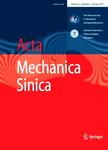Hybrid algorithm for modeling of fluid-structure interaction in incompressible, viscous flows
Hybrid algorithm for modeling of fluid-structure interaction in incompressible, viscous flows作者机构:Department of Naval Architecture and Marine Engineering University of Michigan
出 版 物:《Acta Mechanica Sinica》 (力学学报(英文版))
年 卷 期:2012年第28卷第4期
页 面:1030-1041页
核心收录:
学科分类:080704[工学-流体机械及工程] 080103[工学-流体力学] 08[工学] 0807[工学-动力工程及工程热物理] 0802[工学-机械工程] 0801[工学-力学(可授工学、理学学位)]
基 金:the financial support provided by the Office of Naval Research(ONR) through grant number N00014-09-1-1204 (managed by Dr. Ki-Han Kim) supported in part by the National Research Foundation of Korea (NRF)grant funded by the Korea government (MEST) through the GCRC-SOP Grant No. 2012-0004783
主 题:Fluid-structure interaction Viscous Incom- pressible Computational Added Mass Stability
摘 要:The objective of this paper is to present and to validate a new hybrid coupling (HC) algorithm for modeling of fluid-structure interaction (FSI) in incompressible, viscous flows. The HC algorithm is able to avoid numerical instability issues associated with artificial added mass effects, which are often encountered by standard loosely coupled (LC) and tightly coupled (TC) algorithms, when modeling the FSI response of flexible structures in incompressible flow. The artificial added mass effect is caused by the lag in exchange of interfacial displacements and forces between the fluid and solid solvers in partitioned algorithms. The artificial added mass effect is much more prominent for light/flexible struc- tures moving in water, because the fluid forces are in the same order of magnitude as the solid forces, and because the speed at which numerical errors propagate in an incom- pressible fluid. The new HC algorithm avoids numerical instability issues associated with artificial added mass effects by embedding Theodorsen's analytical approximation of the hydroelastic forces in the solution process to obtain better initial estimates of the displacements. Details of the new HC algorithm are presented. Numerical validation studies are shown for the forced pitching response of a steel and a plastic hydrofoil. The results show that the HC algorithm is able to converge faster, and is able to avoid numerical insta- bility issues, compared to standard LC and TC algorithms, when modeling the transient FSI response of a plastic hydrofoil. Although the HC algorithm is only demonstrated for a NACA0009 hydrofoil subject to pure pitching motion, the method can be easily extended to model general 3-D FSI response and stability of complex, flexible structures in turbulent, incompressible, multiphase flows.



